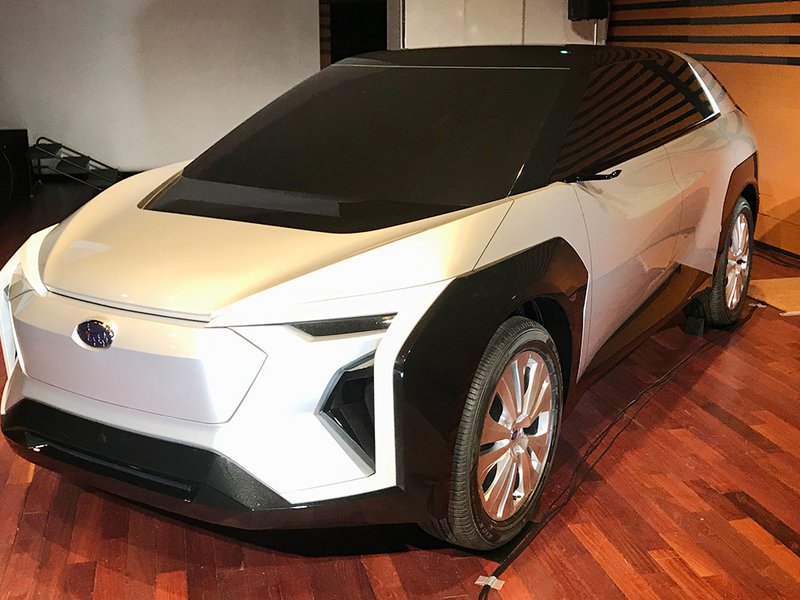
TOKYO — Subaru’s first full- electric crossover points to a greener future for an all-wheel-drive brand long seen as an electrification laggard.
But executives aren’t particularly bullish about the sales prospects of doing that in their biggest market, the United States.
“The U.S. market is really tough,” Subaru CEO Tomomi Nakamura said at a technology briefing here last week where he announced big, new targets for electrifying the automaker. “I think that the market for electrified vehicles will take some more time to form in the U.S. Only Tesla’s EVs are selling well.”
Subaru will attempt to derive at least 40 percent of its global sales from full electrics or hybrid vehicles by 2030, with its entire lineup being electrified in the first half of the 2030s, the company said.
But electrification adds cost, and Americans don’t see the value in added fuel economy, Nakamura said.
Subaru provided a glimpse of its direction last week, showing a full-size mock-up of its first full-electric vehicle that is set to arrive in the early 2020s. The low-slung crossover design brought a touch of edginess to the sometimes boxy brand.
Subaru is playing catch-up in an arena where competitors are moving rapidly into electrification.
The only hybrid Subaru offers in the U.S. — the plug-in Crosstrek crossover — has tepid sales, and American dealers don’t seem enthusiastic about the technology, Nakamura acknowledged.
“They ask us when we will introduce hybrids. But when we ask them how much they can sell, they don’t give us a clear-cut answer,” the CEO said. “So we will continue to watch such a situation on the ground. If we are to introduce hybrids, we would like to sell them properly.”
Subaru said it will have to go electric in the United States to meet such regulations as California zero-emissions rules. But true consumer-driven demand is evident only in Japan and other markets.
Subaru will lean on partner Toyota Motor Corp., which owns a 20 percent stake in Subaru, to help with its electrification strategy.
By 2025, Subaru will roll out a pure-electric drivetrain and a strong-hybrid system, both of which are being developed with Toyota.
The pure EV will be a crossover arriving early in the decade. Subaru and Toyota will release their own versions, presumably with unique designs based on a common EV architecture.
Subaru’s EV mock-up foretells a sleek ride with a raked rear window, elongated cabin, digital side-view mirrors and short front and rear overhangs. The fascia is aggressively creased, while the wheel wells get heavy black cladding for a rugged look.
Subaru plans to adapt Toyota’s two-motor hybrid system to its own all-wheel-drive vehicles. Subaru calls that setup a strong hybrid, in contrast with the mild-hybrid e-Boxer system developed in-house and currently sold in the Crosstrek and Forester for such markets as Europe and Japan.
Subaru’s twist keeps the brand’s hallmark horizontally opposed engine and positions the two electric motors in a longitudinal array, behind the engine and along the axis of the propeller shaft.
Subaru has no choice but to team up with a bigger partner in an era of industry tumult and spiraling costs for new technologies that underpin electrified, self-driving and connected cars, Nakamura said.
Toyota and Subaru deepened their longstanding alliance when Japan’s largest automaker upped its stake in Subaru and Subaru took its first reciprocal stake in Toyota.
Subaru aims to sell 1.07 million vehicles worldwide in 2020, just one-tenth of Toyota’s sales plan.
“As a small carmaker, we need to think about how to enhance Subaru’s uniqueness so consumers differentiate us from others,” Nakamura said.
“Working on conventional technology and new technologies at the same time puts more burden on our development. … We will leverage our alliance to accelerate the development of essential technologies.”
Naoto Okamura contributed to this report.